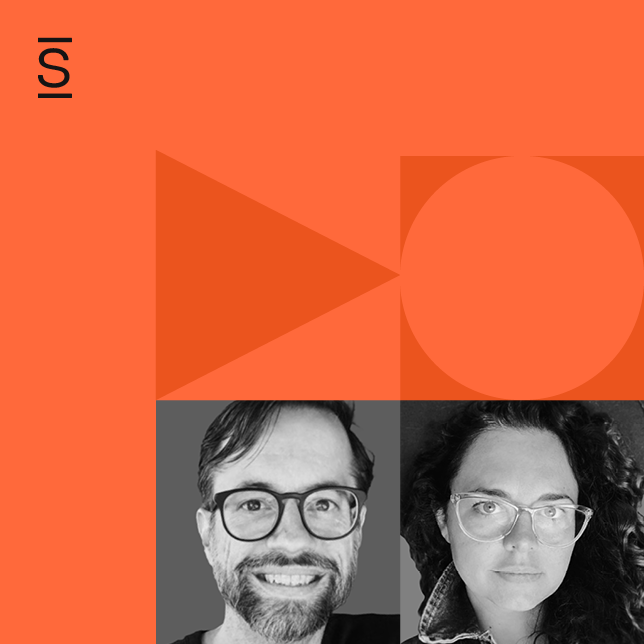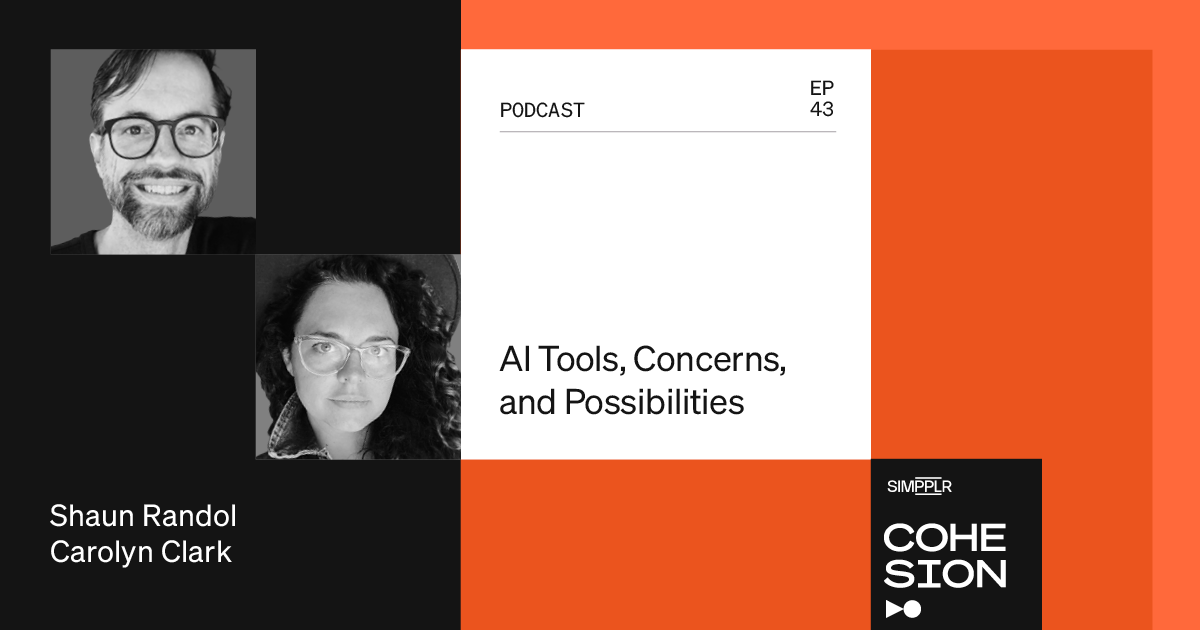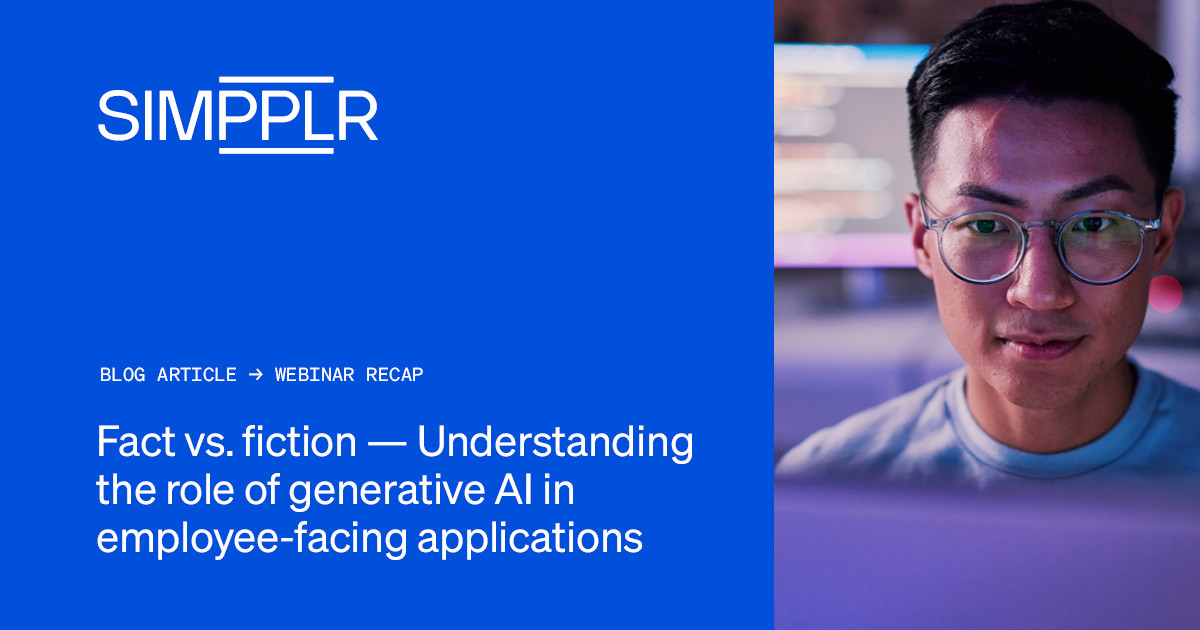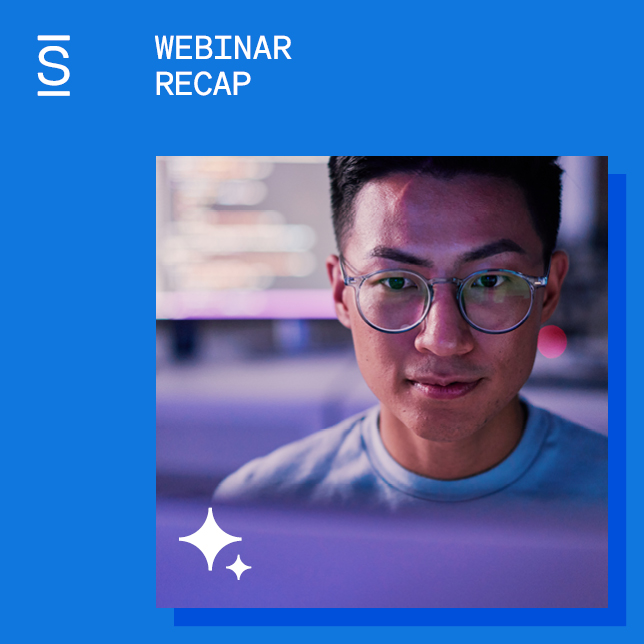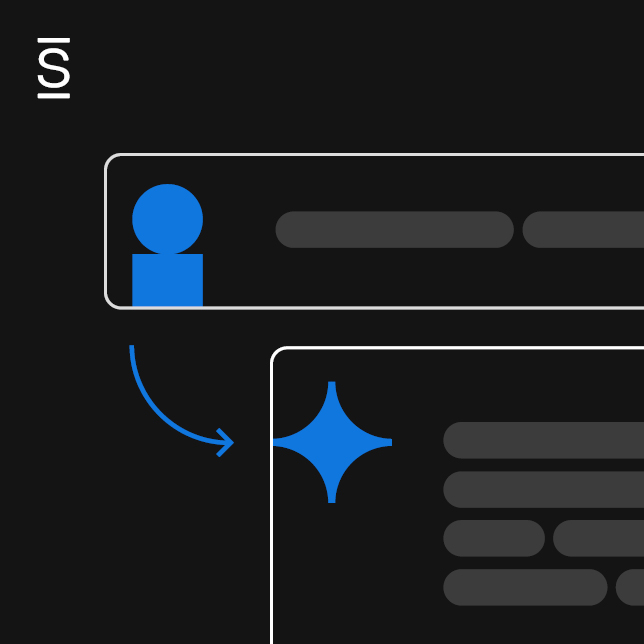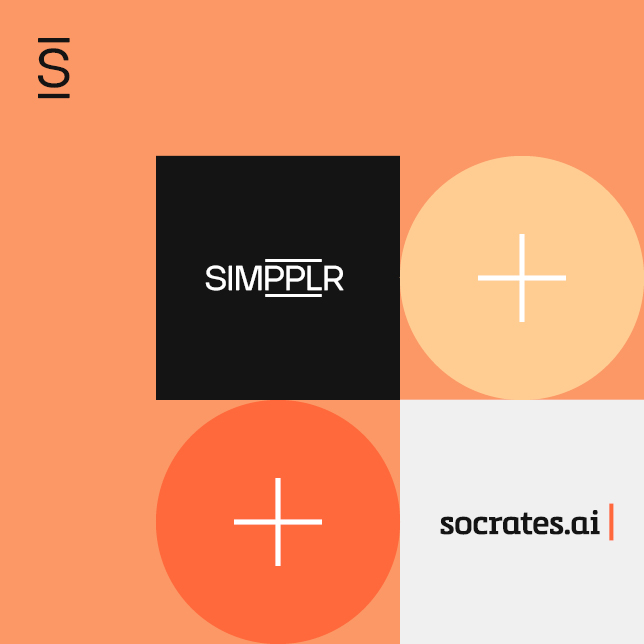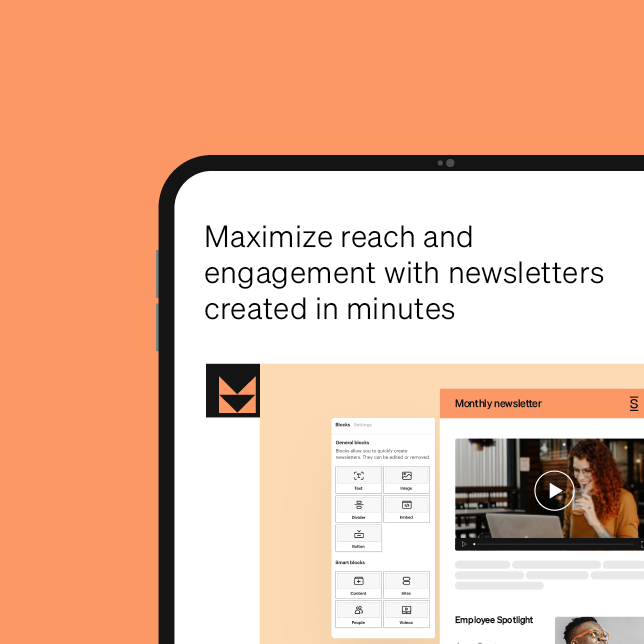ChatGPT defined
In Episode 43 of the Cohesion Podcast, Shaun defines ChatGPT as a powerful, artificial intelligence language model trained on a vast array of text. It’s designed to understand and generate human-like responses based on the inputs that it receives. One can also look at it as a virtual assistant that engages conversationally. It understands questions, statements, and prompts, and provides coherent responses by generating contextually appropriate text and simulating human conversation.
“I believe the release of this generative artificial intelligence platform in November 2022 was a watershed moment in human creativity and innovation akin to the introduction of the affordable personal computer, and maybe as disruptive as the printing press.”
Carolyn admits it’s hard to outfox ChatGPT, even if you deliberately try. Essentially though, it’s an AI tool modeled by humans and the substance of the information it generates very much depends on the quality of human input.
Right now, it’s too early to fully understand the role AI will play in internal communication. It’s a valuable virtual assistant with basic capabilities, especially when you’re running out of time or you’re facing a blank page and don’t know where to start. A tool like ChatGPT can knock hours off the work week by formulating a response to a simple prompt. It can be seen as a type of first draft or jumpstarter.
Carolyn uses ChatGPT like an extra set of eyes, a gut check if you will, generating content and asking it to improve what she’s created, summarize it, or alter the tone. It’s great for brevity, blind spots, and for checking bias.
ChatGPT differs from a routine search engine because it’s more conversational. As Shaun says, the clue is in the name ‘Chat,’ and it’s a chatbot. You ask it questions, it gives you answers, and then you can ask it to refine or revise those. Having a mindset of asking thoughtful questions is a great way to start with AI-generated content. On the other hand, it’s useful if you need straightforward instructions and a head start on using something new.
The transformation of HR and internal communications
AI is slowly transforming HR and communication within companies. Carolyn, tactically uses ChatGPT to create FAQs, emphasizing the speed with which this can be done. Apart from the instantaneous feedback from ChatGPT, Carolyn can hone her content and communication in the most relevant way possible.
Shaun mentions that, apart from Carolyn, very few communication professionals are seriously talking about AI within corporate communication at present.
Unfortunately, internal communication is one of the last functions within an organization to get the monetary resources needed to invest in new technology. This means that the AI transformation is happening on an individual level. It’s likely that team members won’t even know when a colleague is using it, so it’s too early to predict the pros and cons of an AI rollout across all HR and communication functions in a company.
The dark side of progress. Are AI fears unfounded?

While AI clearly has benefits, Shaun says, it’s a sobering thought to know that on the day this interview was recorded, AI professionals—people who built this technology across the globe, made their concerns clear.
“Hundreds of AI professionals have signed a one-sentence statement, saying that mitigating the risk of extinction from AI should be a global priority alongside other societal scale risks, such as pandemics and nuclear war.”
Reading stuff like this isn’t going to reduce anyone’s stress levels, but Shaun reminds us that the media love pushing alarmist stories because they know we’ll read them. Also, while so many users can see the huge, positive potential of AI, its creators are hedging their bets. They’re trying to distance themselves from the technology in case there are negative consequences, but Shaun assures there is reliable sincerity too.
Though there are, and will be, negative forces at play, those who signed the statement believe themselves to be the trusted individuals to usher AI forward in a way that doesn’t harm humanity or the planet.
Carolyn gives some pointers to those of us wondering how to deal with worrying AI-generated information. How do we know what to believe?
Firstly, it’s important to be sure of its provenance and whether it originates from a reliable source. Then, if it’s not going to affect you, your family, or your colleagues directly, make sure you don’t fall victim to unnecessary anxiety. Yes, we all must look out for one another and do whatever we can to protect the planet, but we can only handle so much.
“It’s a complex place and confusing. Be worried, be cautious, but be excited too.”
Shaun doesn’t think all fears are necessarily unfounded. Apart from things like disinformation and fake videos, platforms like Spotify are removing masses of AI-generated music. Russia is using AI-generated technology for propaganda on both sides of the war in Ukraine. We can only imagine what we’ll have to contend with in the run-up to the 2024 US presidential election in the way of fake video, audio, photography, or outside manipulation.
Unfortunately, there’s scope for a heap of social negativity and rage. It’s important that people are aware of this, and that responsibility and accountability are taken where needed. At the same time, it’s worth bearing in mind that the so-called ‘fathers of AI’ who are warning about the capabilities of AI in the future are likely more concerned about falling behind in the marketplace. It’s important to maintain perspective.
Can AI take my job?
If AI can write my content, why doesn’t my boss use that and let me go? Shaun doesn’t think AI will replace humans to any significant extent soon, but people will need to upskill to maintain their jobs.
“In talking about artificial intelligence and communications work, AI will not replace you, but somebody using AI will,” Shaun says, and there will likely be fewer jobs because one person can do more using these technologies.
People will spend more time on thoughtful, strategic work rather than repetitive, administrative detail. Five years ago, a study of 200 technology applications found that 38% of PR work could be done using AI. Now we have an explosion of AI tools. Shaun hasn’t seen a recent study but estimates that up to 70% of PR work can now be done using AI.
This doesn’t mean everyone in PR has been fired, but that those in PR will be doing a faster, more productive, and effective job because they’re using AI tools to write press releases, media advisories, and interview background notes. Yes, the number of people working in PR might be reduced, but those left will be using AI, which will be the corporate future.
Carolyn agrees, reminding us that technology is moving fast. People should get on board because everything that is not strategic and unimportant will be replaced.
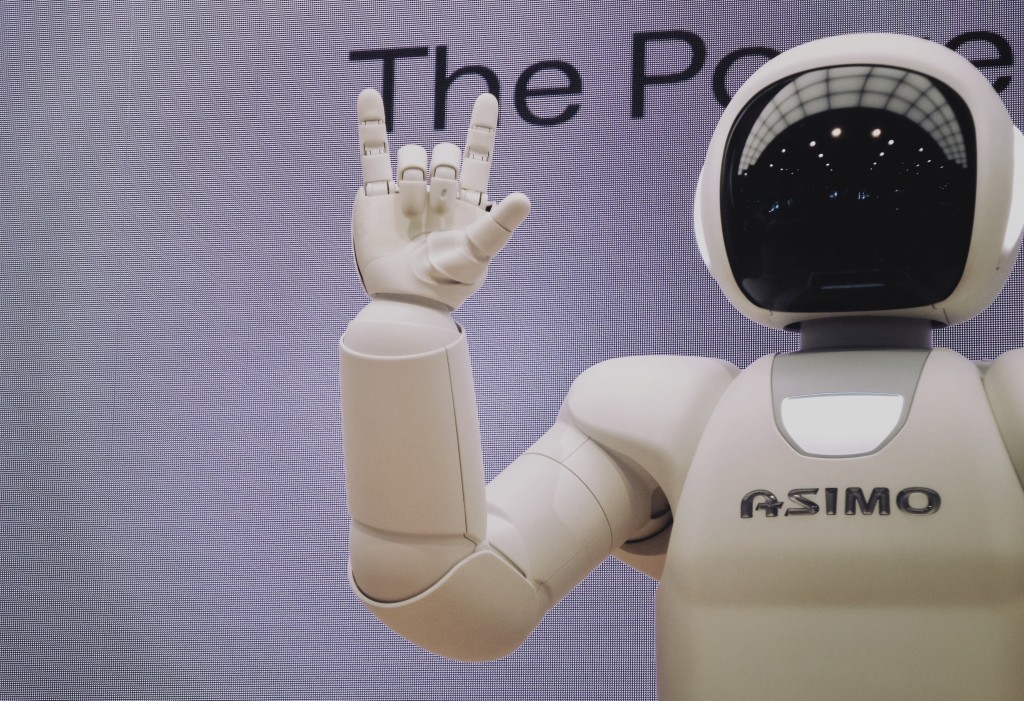
AI and the employee experience
Shaun points out that AI can be used by a company to quickly provide content and distribute it to the people who need it, exactly when they need it. AI has a real place here because people won’t care where critical information comes from, if it comes. Most people won’t even realize it’s AI-generated.
Carolyn agrees, adding that people are unlikely to wonder where the information originated, tough as this is for communication professionals to hear. Most employees would subconsciously think it came from the CEO.
Generated content is hard to spot, although companies must be vigilant about things like tone, and feelings and address whatever concerns arise to keep a handle on healthy culture. Carolyn also reckons that AI will impact the ability to get quick context internally and externally. This means that employees have access to more information about what happened in an organization in the past. This can drive engagement, but there will be negative effects too.
For example, anyone can ask a platform like ChatGPT to give them, in a few seconds, a rundown of company performance through history, and this might not correlate with current company messaging. It’s more about bandwidth, Carolyn says, and not about trying to hide things, but it’s something communicators need to watch.
“As more people get comfortable with the idea that context is available, they will use it to push their employers for even more context. It will be a cycle that I don’t think many of us are prepared for yet.”
AI can’t say ‘I love you’ and mean it.
One thing that is unlikely to be replaced by AI, Carolyn points out, is humans’ wonderful storytelling ability.
“AI can give beautiful descriptions, but it can’t generate humanity. Emotions and feelings, and the human psyche, need a special understanding; this is where future communicators will do their work.”
While these areas thrive, Carolyn explains, people will have the capabilities to create more effectively. Working smarter is a good idea for people who fear AI might compromise their job. Explore and use AI tools that could make your work easier and hone those skills that most likely won’t be replicated. AI not only allows you to produce great content really quickly but also allows you to improve as a communicator.
So, is there anything AI can’t do? Shaun says it’s difficult to know what will happen in the future, but right now, though AI can give you context about your company, it doesn’t understand it. This means it could generate something inappropriate.
Also, it’s not creative, so everything it presents is based on existing content. Consequently, rare events get scant coverage if no information is available.
Caroline adds that when you write for someone, AI isn’t suitable for content that needs a distinct style or voice. Sure, you can generate similar-sounding content, but AI won’t pick up the day-to-day flux of that person’s emotions. Hence, the human connection is always desirable for certain situations like that.
“AI can’t tell me how our CEO feels that day and how that influences how he directs the company. That can only come from human connection with him as an individual.”
AI can generate some beautiful context, but it doesn’t always get to the heart of what we want to express. There’s no miracle and no magic in it because the individual experience cannot be replicated.
For now, it’s the wild west out there
Shaun cautions that, given the relative newness of the technology, we don’t want to be putting any sensitive or proprietary information into ChatGPT, or any other AI chat box platform out there. These platforms own the data fed to them and store it on their servers. This is vulnerable to possible cyberattacks, and the last thing you want to do is compromise your company, or yourself should a leak occur. There is an incognito mode, however, that Carolyn uses, enabling you to strip away any confidential details, and this won’t limit your results at all. Also, you needn’t name names. Use ‘pretend’ companies in your conversations if you can and turn off your chat record in history to be on the safe side.
It’s worth touching on security and ethics too, for a moment. These are highly specialized areas; we can’t all be experts, but we must understand what’s at stake. Shaun recommends following Sam Altman on social media and listening to his podcasts. One of the founders of OpenAI and the actual creator of ChatGPT, he does a great job of thoughtfully explaining ethical concerns around his company’s technology.
For cybersecurity issues and technical concerns, look at Open Philanthropy, another ethically-minded AI technology company. There are many white papers available, generally readable by a lay audience.
To keep herself up to date, Carolyn has set up Google alerts “with a gazillion keywords” relating to the topic and receives tons of useful newsletters. She’s also tracking some of the leading educators and academics in the field to get as much information together in this new area of transformation. It’s a rapidly developing technology, so find out whatever you can. Keep AI in the back of your mind to be constantly aware of its direction, and always seek balance.
If you’re interested in finding out more, check out the full podcast here. And then Carolyn is on LinkedIn and at carolynjordanclark.com, and you can also read about her at Simpplr. Carolyn is happy to answer questions or learn more from anyone who wants to add to the discussion.
And did you know that Shaun is the real Mr. Editorial? You can read and subscribe to his free newsletter here, for more information on internal and external, or mixternal, communications, or get in touch on LinkedIn.
